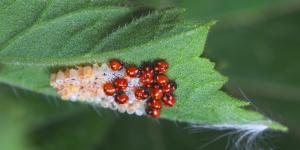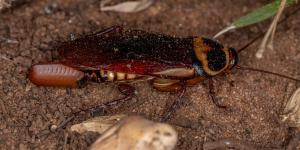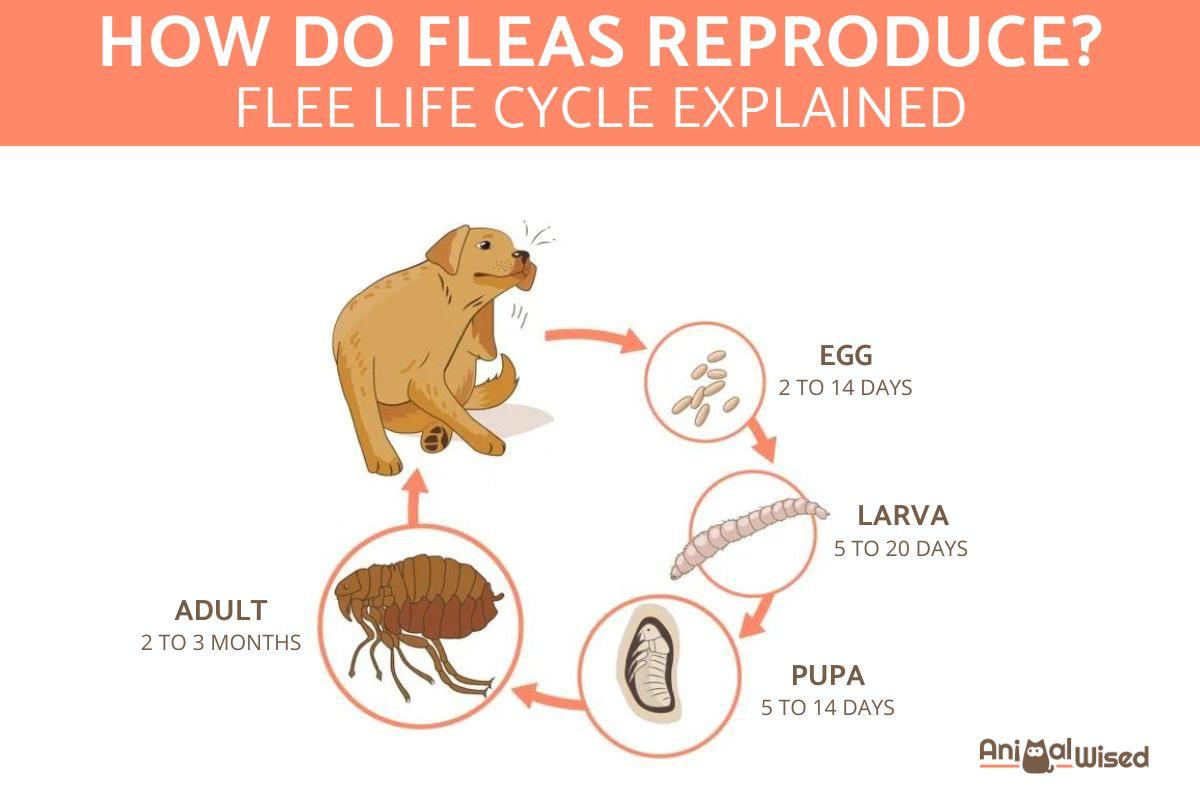How Do Fleas Reproduce?


Despite their small size and lack of wings, fleas are notorious pests for pet owners and wildlife. These external parasites survive by feeding on the blood of mammals and birds, including common hosts like dogs, cats, rodents, and even humans. Understanding their life cycle and reproduction is crucial not only for controlling infestations but also for preventing the spread of diseases they can transmit.
This AnimalWised article explores how fleas reproduce. We'll examine the different stages of their life cycle, the conditions that favor their rapid growth, and their impressive reproductive rate.
How do fleas reproduce?
Fleas reproduce sexually, with the male fertilizing the female's eggs through an internal organ called the spermatheca. After feeding on blood, a crucial trigger for egg production, the female lays white, oval eggs that are about half a millimeter long. Their smooth, slippery surface makes them easily dislodge from the host's fur, strategically scattering them throughout the environment. This ensures a wider chance for survival and infestation.
Fleas are perfectly adapted for life on their furry or feathered hosts. Their laterally flattened bodies allow them to navigate through the dense undergrowth of fur with ease. Microscopic hairs and spines pointing backward further aid their movement and prevent them from getting snagged.
Do female fleas need a male to reproduce?
No, female fleas do not necessarily need a male to reproduce. Fleas can reproduce through a process called parthenogenesis. In parthenogenesis, female fleas can lay viable eggs without fertilization from a male. This means that a single female flea can establish a new infestation.
However, as mentioned earlier, for the most part fleas reproduce sexually. If a male flea is present, he can fertilize the female's eggs, leading to potentially higher reproduction rates and more genetic diversity.
To gain a deeper understanding of external parasites that can affect your pet, explore our next article that explains the key differences between fleas and ticks.
How are fleas born?
Fleas aren't born in the traditional sense. Instead, they undergo a process called metamorphosis, a complete transformation with distinct stages. Here's the breakdown:
Egg
Within 2 to 14 days, depending on temperature and humidity, the eggs hatch.
Larva
Outcome blind, legless, white caterpillars with brown heads, measuring a mere 1.5 to 5 millimeters. Unlike their parents, larvae are scavengers, feeding on organic debris like adult flea droppings (which contain dried blood) and other decaying matter. This stage lasts for 5 to 20 days and involves three molting phases before the larva transforms into a pupa.
Pupa
The larva spins a cocoon around itself, becoming a pupa. Inside this cocoon, which can collect dust and debris for camouflage, a remarkable transformation occurs. Depending on the environment, this pupal stage can take as little as 5 to 14 days. However, if no host is readily available, the flea can enter a dormant state within its pupa, waiting for better conditions. Flea pupae can stay dormant for months in adverse conditions, such as cold temperatures. They remain in this state until favorable conditions arise, ensuring their survival and the continuation of their life cycle.
Adult
Finally, a fully formed adult flea emerges from the cocoon. Adult fleas are typically dark brown to black. Now a full-fledged bloodsucker (hematophagous), the adult flea can start feeding within minutes of finding a host. Females can lay eggs within a day or two of their first blood meal. Adult fleas can live for several weeks to months, depending on the environment and availability of hosts.
The entire flea life cycle can be completed in as little as two weeks under ideal conditions of warmth and humidity. However, cooler temperatures, lack of a host, and other stressors can extend the cycle to several months. This remarkable ability to adapt their life cycle based on environmental conditions is a key factor in their success as persistent pests.
Learn proven strategies for eliminating fleas from your dog's fur and preventing future infestations in our next article.
How long does it take for fleas to reproduce?
As mentioned before, adult fleas require a blood meal from a host to reproduce. In other words, without a host, adult fleas cannot feed and lay eggs. They typically reside in the host's environment, like carpets, bedding, and crevices, for easy access to a feeding opportunity.
Upon emerging from the pupal stage, these adult fleas actively seek a host. They can begin feeding within minutes of finding one. Female fleas require one or two blood meals to mature their reproductive organs and start producing eggs.
It is important to note that under favorable conditions, fleas can reproduce continuously. Optimal development occurs at temperatures between 75°F and 86°F (24°C and 30°C). This allows flea infestations to persist year-round in heated environments. Humidity also plays a significant role, and ideal levels for flea development range from 70% to 85%. This leads to population spikes, particularly in spring and summer when these environmental factors are most ideal.
How quickly do fleas multiply?
After feeding, they can lay eggs within 24 to 48 hours, with a potential of up to 50 eggs per day, totaling up to 2,000 eggs in their lifetime.
How long can fleas live without a host?
Fleas can survive without a host for about one to two weeks as adults. Their larvae and pupae, on the other hand, are able to persist for several weeks to months in the environment without needing a host.
Fleas reproduce quickly, but don't despair! Learn effective methods to break the flea life cycle and protect your cat in our other article.

If you want to read similar articles to How Do Fleas Reproduce?, we recommend you visit our Facts about the animal kingdom category.
- Heeb, P., Werner, I., Richner, H., & Kolliker, M. (1996). Horizontal transmission and reproductive rates of hen fleas in great tit nests . Journal of Animal Ecology, 474-484.
- Krasnov, BR, Burdelova, NV, Shenbrot, GI, & Khokhlova, IS (2002). Annual cycles of four flea species in the central Negev desert . Medical and Veterinary Entomology, 16(3), 266-276.
- Krasnov, BR, Khokhlova, IS, Arakelyan, MS, & Degen, AA (2005). Is a starving host taster? Reproduction in fleas parasitizing food-limited rodents . Functional Ecology, 19(4), 625-631.
- Medvedev, S.G., & Krasnov, B.R. (2006). Fleas: permanent satellites of small mammals . In Micromammals and macroparasites: from evolutionary ecology to management (pp. 161-177). Tokyo: Springer Japan.






